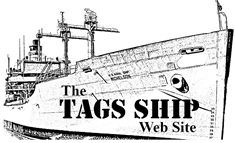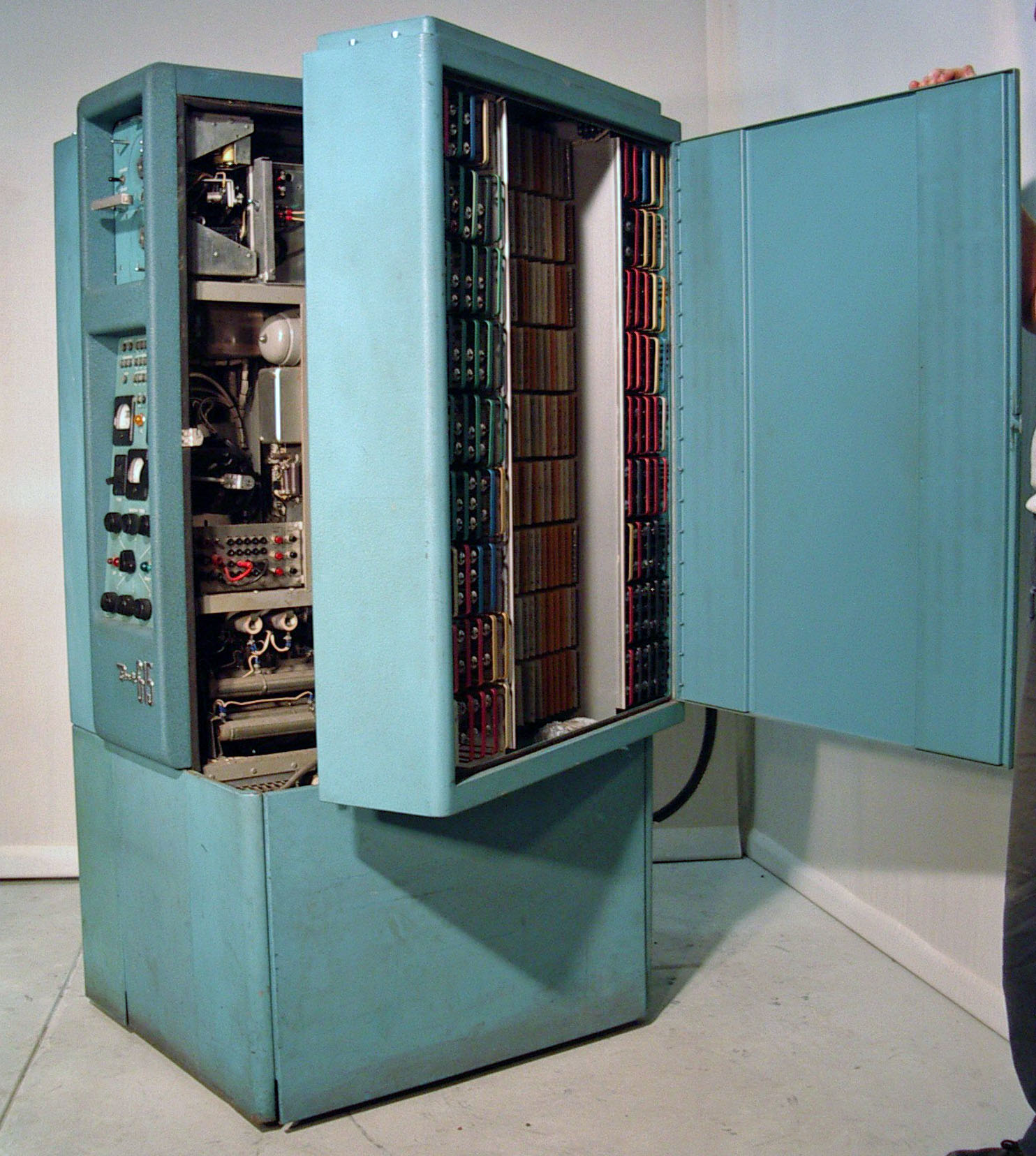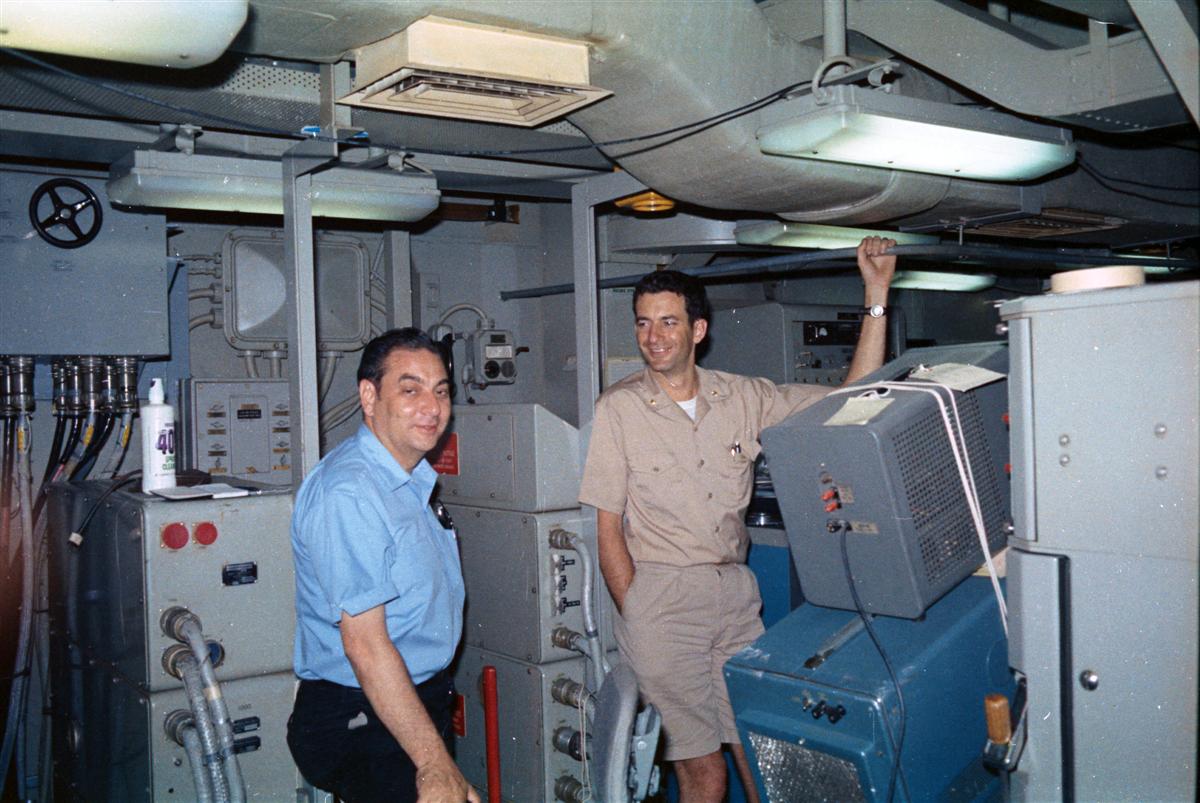AN/BRN-3 Satellite Navigation System
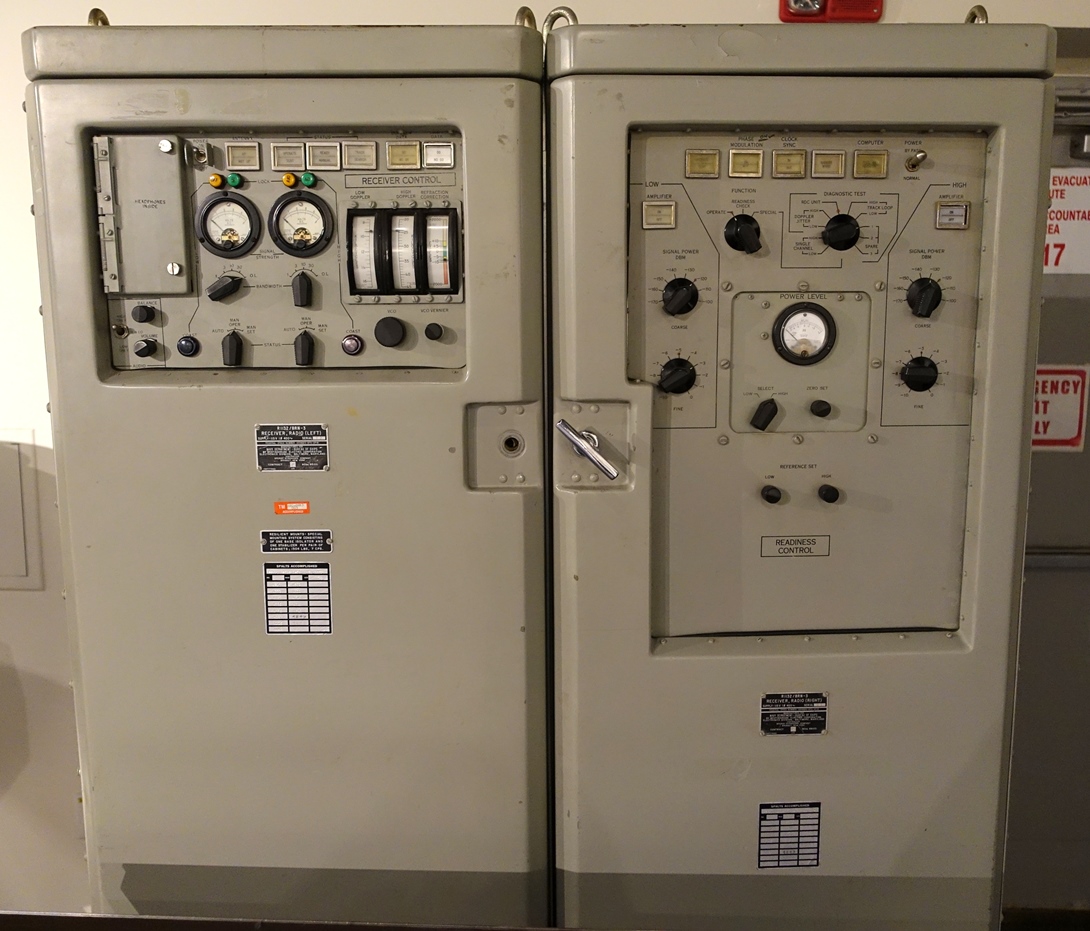
Receiver manufacturer: Westinghouse.
Computer manufacturer: Bunker-Ramo.
The first operational satellite navigation system, known as Transit, developed for the US Navy's Fleet Ballistic Missle program.
Photo from National Electronics Museum in Wikimedia Commons.

The AN/BRN-3 aboard USNS Michelson, 1970-1971.
Bunker Ramo CP-677A/BRN-3 computer (1st cabinet on the left).
CV-1296/BRN-3 Data Processor (2nd cabinet).
Westinghouse R-1132/BRN-3 Receiver (3rd and 4th cabinets).
Photo courtesy of Earl Adams.
AN/SQN-6 (XN-1) Stabilized
Narrow-Beam Sonar Sounding Set
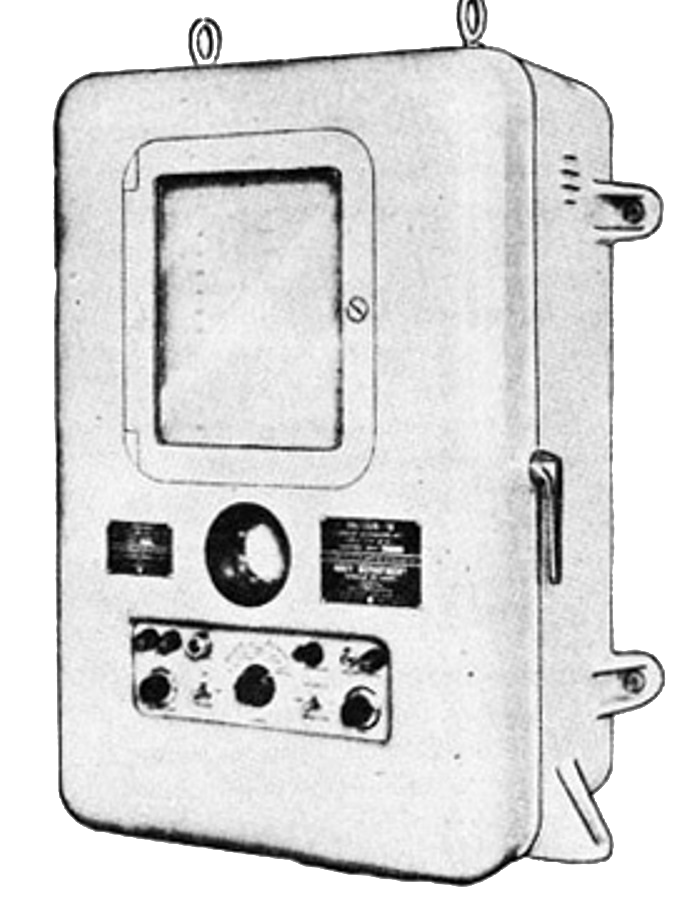
|
The SQN-6 (XN-1) was a modified UQN-1 type sonar set connected to an external precision depth recorder (PDR), whch keyed the UQN transmitter
and recorded the received returns. To compensate for the ship's roll and pitch the sonar transducer was stabilized vertically by an electro-mechanical apparatus.
Doc: NAVSHIPS 93143
AN/UQN-1B Sonar Sounding Set Technical Data (pdf file).
|
Timesfax Precision Depth Recorder (PDR)

In the 1960s Bowditch, Dutton and Michelson had two each of these PDRs, made by a company called Timesfax, somehow related to the New York Times newspaper.
PDRs of that vintage were derivatives of facsimile (fax) machines, originally used to transmit photographs for news organizations.
These PDRs keyed the transmitter in the SQN-6 sonar and recorded the returns on rolls of special electrically charged paper.
Trackline Survey Sonar Bathymetry: Article by John Hansen.
Raytheon PTR-105 Sonar and Associated PDR

This photo taken in the mid-1970s Bowditch Survey Control Center shows what appears to be Raytheon PTR-105 sonar and a pair of Raytheon precision
depth recorders (PDR) for trackline surveys.

|
Some PTR-105 advertising from Raytheon.
Photo courtesy of Roger Gilfert.
|
AN/SSQ-27 (XN-1) Time and Frequency Standard
"Borg Time"
Manufacturer: Borg.
Installed in NIC, "Borg Time" distributed date and time information to the NAVDAC computer, PDRs and perhaps other devices. It also furnished precise
120 volt 60 hertz AC to electric clocks in the Navy spaces and in the pilot house.
AN/WPN-3 Loran-C Receiver
AN/SPN-7 Lorac Receiving Set

Manufacturer: Seismograph Service Company (Seiscor).
Michelson used the Lorac "B" hyperbolic navigation system extensively for survey control during the spring and summer of 1964 while conducting sea
trials in the Bahamas. Lorac was widely used in oil exploration, especially in the Gulf of Mexico. The US Navy had a permanent Lorac chain in the Bahamas
supporting the AUTEC (Atlantic Undersea Test and Evaluation Center) project.
ASPS-III Acoustic Ships Positioning System

|
AT-092AR, AT-095 Deep Ocean Transponders
Installed only aboard USNS Bowditch. Photo shows Earl Adams preparing an acoustic transponder for launching.
|
Bendix G-15D Computer
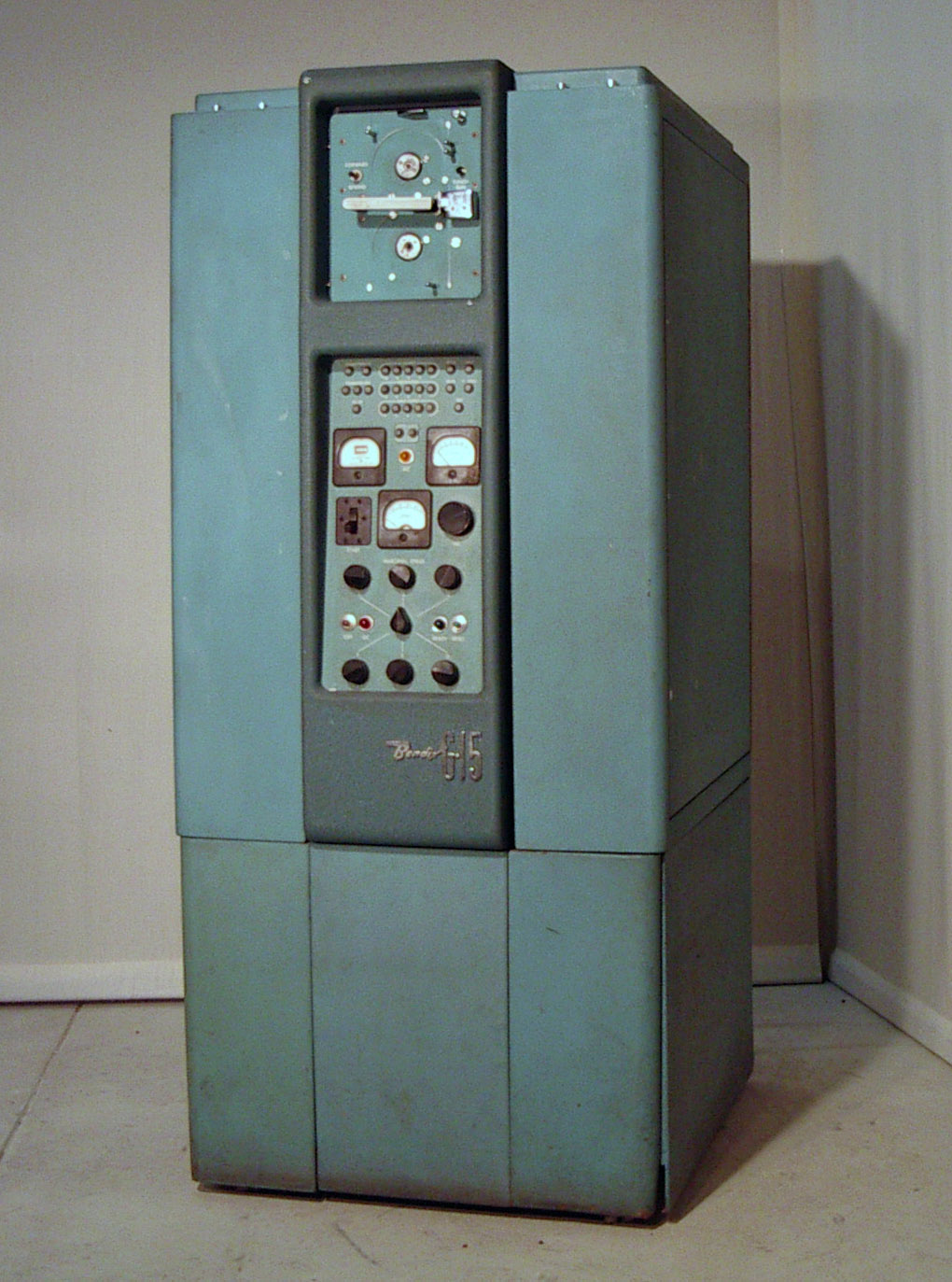
|
Two Bendix G-15D general purpose digital computers were installed in Hydroplot. These computers were used in the onboard production of bathymetric contour charts.
In 1964 they were used aboard Michelson to compute the ship's position from Lorac receiver readings.
These computers were used off line, not being electronically interfaced with SASS or any other shipboard systems.
At left, the front panel with the paper tape reader at top.
|
The right side door open showing the right assembly bays.
The right side open and one of the tube modules. The G-15 used type 5965 twin triode tubes, a/k/a 12AV7.
Above photos from the Australian Computer Museum.

|
An extensive set of technical manuals, brochures and schematic diagrams for the Bendix G-15 computer
can be found here.
|
AN/UYK-1 General Purpose
Digital Computer / CP677

Manufacturer: Bunker-Ramo.
The Bunker-Ramo CP677 was the data processor for SASS, the AN/BRN-3 and, ca. 1969-1970, replaced the Sperry NAVDAC Mk I as NAVDAC.
Photo from Roger Gilfert.

|
CP-677 front panel photo from product brochure.
Technical specifications
can be found here.
|
A product brochure, dated May 1964, for a Bunker-Ramo 133 Computer System.The 133 looks almost identical to the CP677, and has very similar specifications.
The CP677 was installed on the TAGS ships during the 196-64 yard periods as part of SASS and the AN/BRN-3.
Images from Gordon Powell.
Front and back of the AN/UYK-1 Logand Card, listing the machine language programming commands for the computer. CP677 Techs carried these around in
their shirt pockets.
Images from Phil Brooks.
Friden Flexowriter

|
Manufacturer: Friden Commercial Controls.
These were 80 pound electric typewriters equipped with paper punches and readers. They were used aboard the TAGS ships as computer terminals for the Sperry NAVDAC computer.
|
IBM Selectric Typewriter

|
Manufacturer: IBM.
These were initially used as input/output devices for the Bendix G-15 computer. Selectrics were located in Hydroplot and in the Survey Control Center. Later they were
deployed as terminals for the CP-677 computer, which replaced NAVDAC.
|
Mk. 19 Gyrocompass

|
Manufacturer: Sperry.
When the ships were constructed in 1944-45 they were originally equipped with Sperry Mk. 14 gyrocompasses. These were located on the O2 level, amidships, across from the radio room. Parts for these became hard to find by the 1960s.
Sperry Mk. 19 gyrocompasses were installed in NIC during yard periods in 1964-65.
Sperry Mk. 19 Gyrocompass Technical Description (pdf file).
|
NAVDAC Mk. I Computer
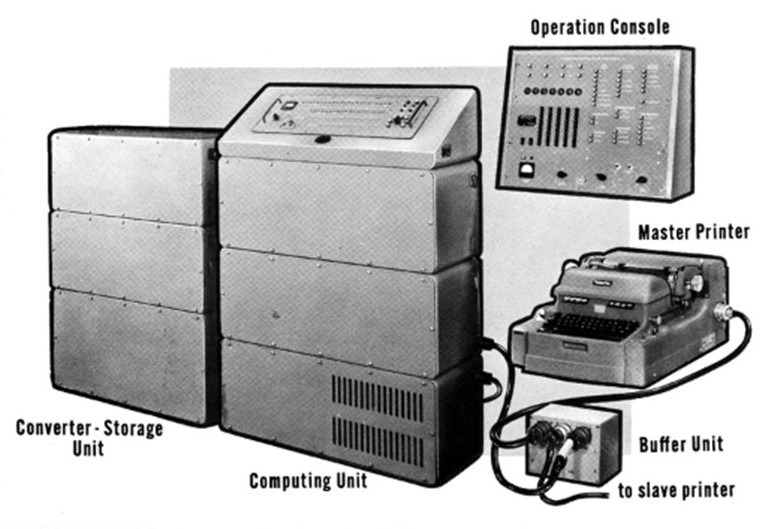
NAVDAC was an acronym for Navigation Data Assimilation Computer, which describes concisely what the equipment was, and what it did. It's unusual for an acronym to end up being so precisely correct! It was a general purpose computer which ran a program that assimilated navigation data.
The original NAVDAC on the TAGS was a Sperry computer built to a UNIVAC design. See the excellent commentaries by
John Prough and
Jack Keenan.
By 1969-70 the Sperry NAVDAC had been replaced on the TAGS by the Bunker-Ramo CP677.

|
NAVDAC operations console panel, with nixie tubes!, from the technical manual.
|
Two photos showing NAVDAC as installed in the second incarnation of NIC c. 1970.
NAVDAC Mk. I Technical Manual

|

|
This (two volume) tech manual is the "final" version, published in 1962. There was a "preliminary" version which was all we had back in '62 when I was on Dutton. If memory serves me, the final version was just a reprint of the prelim!
There were two major modifications to the Mark I in later years. These were the addition of a stepping magnetic tape recorder and the modification to the input and output units to provide communication with the Sperry SINDAC computer (MK3 SINS) and possibly other navcenter systems. To my knowledge, there was never a formal "change" to the tech manual to incorporate either of these mods.
The only information I have for the first mod is an informal "installation manual" for the tape recorder, which includes instructions for the modification to the Mark I. I have this because I designed the mod and wrote the manual.
As for the second mod, I do not have anything more than some pictures of, and technical information for, the "Sugar-cube" components used for the new Input/Output Unit
logic circuits. I was not involved in the design, development and installation of this mod.
Comments and documents from Jack Keenan.
Mk3 Mod3 (Mod6) SINS
(Ship's Inertial Navigation System)

|
Manufacturer: Sperry.
The Sperry Mk 3 Mod 3 SINS, (Later upgraded to Mod 6). SINDAC, The SINS Data Assimilation Computer, is the 3 cabinets on the left. The SINS binnacle is hanging from the overhead on the right.
Photo courtesy of Roger Gilfert.
|

|
The Sperry Mk 3 Mod 3 SINS binnacle, with its skirt raised. The binnacle houses the stable table, which isolates the gyroscopes and
accelerometers from the local vertical.
Photo courtesy of Earl Adams.
|
Sonar Array Sounding System (SASS)

|
Manufacturer: General Instruments.
SASS was installed on Bowditch, Dutton and Michelson during the 1963-64 yard periods.The first multibeam phased array sonar sounding system was the ancestor of all side scans and fish finders in use today.
The SASS control console aboard USNS Michelson, 1972-73.
Photo courtesy of Steve Campbell.
|
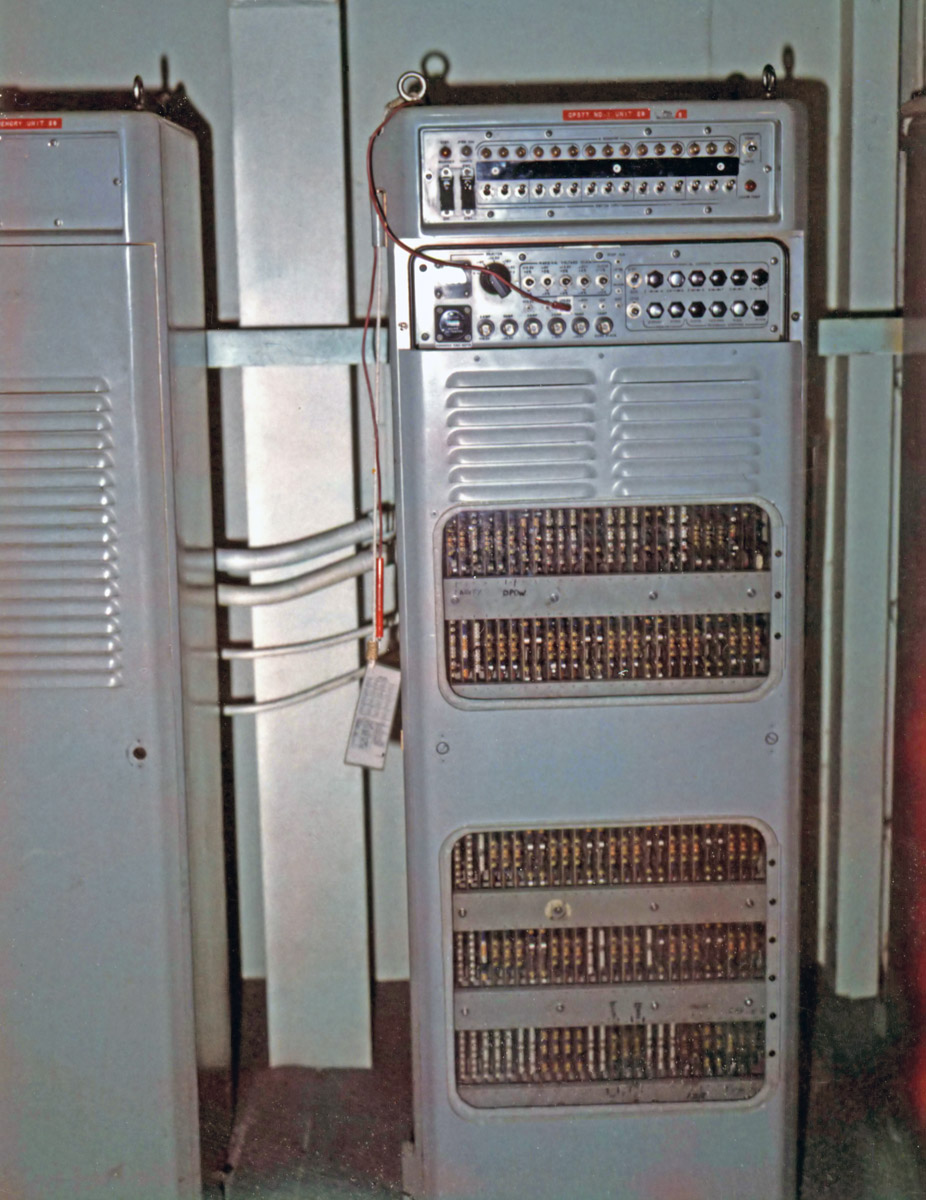
|
The SASS CP-677 computer, aboard USNS Bowditch, 1972-1973. The cabinet on the left is the extended memory cabinet.
Photo courtesy of Bob Lord.
|
More about SASS:
LAZARUS: FROM SEVEN TO SEVENTY SEVEN by Eugene Weisberger, with and introduction by Earl Adams. All about SASS from the general manager at General Instruments.
Introducing an Operational Multi-Beam Array Sonar by Morris F. Glenn, US Naval Oceanographic Office.(pdf file)
An advertisement for Sea Beam, the commercial version of SASS from the late 1970s.
Equipment Notebooks
Earl Adams' "wheelbook" containing equipment operating instructions from USNS Bowditch in 1967-68 (left).
At right, his wheelbook, expanded to a small loose leaf notebook, covered equipment aboard USNS Michelson in 1970-71.
Navigation Information Center (NIC)

|
The equipment floor plan of the second incarnation of NIC (c. 1964-71). Redrawn from the diagram in USNS Dutton Information Booklet, contributed by Henry Alubowicz.
|
Communications Equipment
Until some time in the early 1970s the ships' radio officers had responsibility for receiving and transmitting radio message traffic between the ships
and Navy shore stations using morse code over HF radio. Messages were encrypted and decoded off line by Navy officers or their designees.
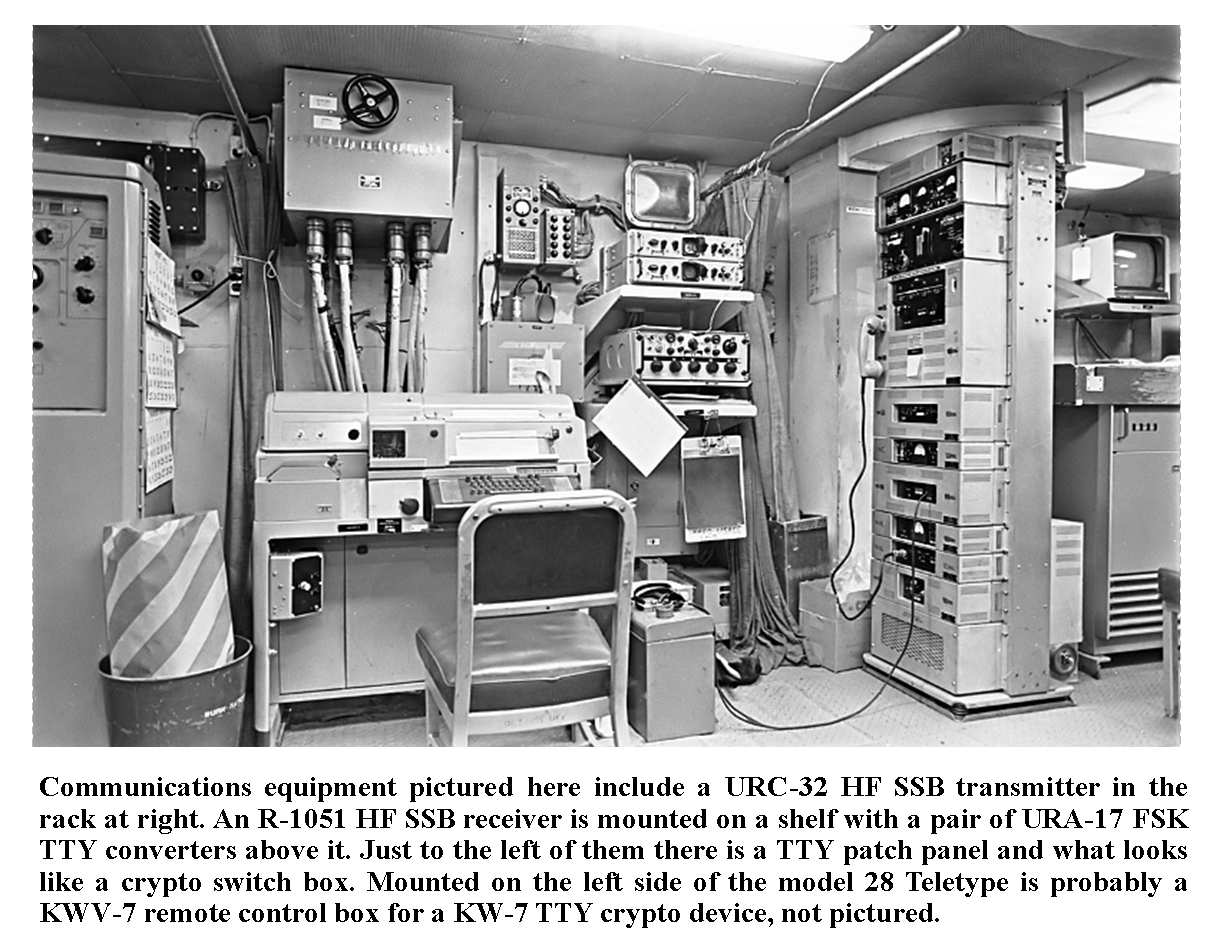
Sometime around 1971 standard Navy communications equipment was installed in the Navigation Information Center (NIC) in the space previously occupied by the NAVDAC computer. A billet for an enlisted
radioman was added. The photo identifies
most of the comm hardware, typical for 1970s HF radioteletype installations. Note the curtain and track attached to the overhead, presumably for security reasons.
Photo by Roger Gilfert, equipment identified by John Hansen.


